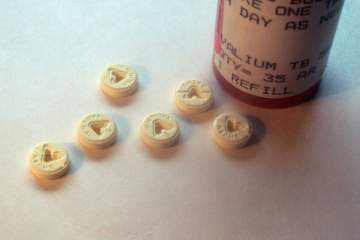From a practical perspective, the research may be more immediately applicable to the treatment of epilepsy than to anxiety disorders: the substance identified was important in preventing seizures in mice in a brain region that can generate them. But the authors believe that just as benzodiazepines — the class of drug that includes Valium (diazepam) — can both reduce seizure risk and relieve anxiety, the same is likely to be true for the natural version.
Researchers can not yet specifically identify the molecule involved, but the study demonstrated for the first time that either a substance called diazepam-binding inhibitor (DBI) or a protein that the brain makes from DBI behaves very much like a benzodiazepine.
“This is the first demonstration that DBI can actually mimic the actions of Valium,” says John Huguenard, professor of neurology and neurological sciences at Stanford University and an author of the study, which was published in Neuron.
In fact, previous studies have found that DBI itself and some of its derivatives have the opposite effect: increasing the chances of seizures and promoting anxiety. But the new research relied on a variety of different types of lab and rodent experiments to show that at least in some parts of the brain, a substance that is either DBI or is made from it has anti-seizure effects.
Les Iversen, visiting professor of pharmacology at Oxford and the researcher who first proposed the existence of such substances more than 30 years ago, said he was “delighted” to see the research, adding that it is “an important step” in confirming his hypothesis. He was not associated with this study.
The experiments focused on an area known as the thalamic reticular nucleus, which is normally involved in the integration of information coming in from the senses. “It`s the system that allows the world to get in, all of the sensory pathways,” says Huguenard.
In “absence” seizures — those that produce staring spells and “tuning out” from the world but do not cause complete loss of consciousness or muscle control — this area generates an unusually synchronized electrical pattern, which interferes with normal functioning. “It`s like an electrical storm in the brain,” says Huguenard. “The entire circuit gets hijacked.”
Huguenard and his colleagues showed that mice genetically engineered to lack DBI, which are prone to these types of seizures, can be treated by restoring DBI function. Studying cells from this region, they also found that DBI has actions on the GABA receptor — which is affected by benzodiazepines— and that these effects are similar to those of the drugs.
“My hope is that, in general, new therapies for brain disorders are going to help the brain do what it does naturally,” Huguenard says.
More about:
















































